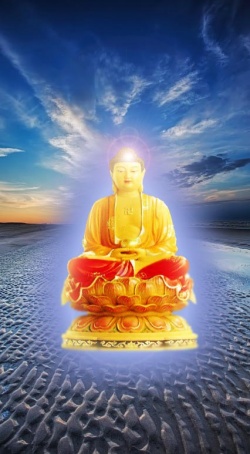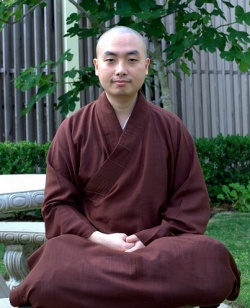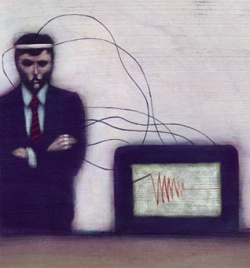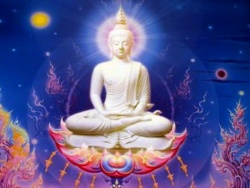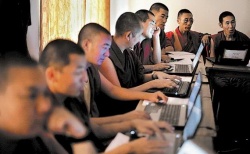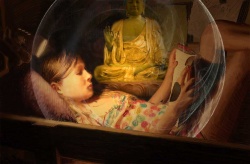Gomang
Drepung Gomang is a Tibetan Buddhist monastery established in the Gelug tradtion, founded by Je Tsong Khapa (1357-1419).
The Gelug tradition lays special emphasis on the place of ethics, as expressed through monastic discipline, as the ideal basis for religious education and practice.
Drepung Gomang College is renowned among all the Gelug Monasteries (Ganden, Sera, and Drepung) for its emphasis on and expertise in the field of logic and debate.
Of the four colleges at Drepung:
Losel-ling (Blo-gsal gling Grva-tshang) and Gomang Colleges (sGo-mang Grva-tshang) have only sutra studies,
Ngagpa College (sNgags-pa Grva-tshang) has only tantra studies, while
Deyang College (bDe-dbyangs Grva-tshang) has both.
Dulwa,
Shagkor, and
Gyelwa Colleges amalgamated into the others.
Although they no longer existed as separate colleges, abbots holding the lineages of their thrones continued to be appointed from either Gomang or Losel-ling Colleges.
Later, of the four remaining colleges,
Gomang and Losel-ling came to specialize mostly in sutra studies and practice,
Ngagpa mostly in tantra, and
Deyang in both sutra and tantra practiced equally.
Each college has an abbot who is responsible for the teaching, studying, and practice there. There is also a general abbot or throne-holder for the entire monastery, the lineage for which has come from Jamyang Chojey. In later times, the custom has been that the eldest retired abbot of the individual colleges assumes the position of the throne-holder of the entire monastery.
Drepung Gomang Monastic University is one of the most reputed centers (the three great seats: Drepung, Gaden and Sera) for learning, contemplating and practicing Tibetan Buddhist thoughts and science notably known as the second Nalanda University in Tibet. As prophesied in Langsheg Sutra by Lord Buddha:
When once Nagaraja Madhopa pledged Lord Buddha with a white conch, Lord Buddha handed it over to Maugalayana, one of his two closest attendants who possessed transcendental miracle-power, with blessed and instructive decree to take it to Gogpa Ri (Garlic Hill) at Gaden in Tibet and hide it there in the hill. It adds that in the future the Bhiksu of Lotus-purity in nature would unearth it and it would thereafter be used as Tsogdhung, to be blown as the signaling medium for gathering to spiritual congregation...
Among the seven monastic colleges in Drepung Monastery (formerly the largest monastery in Tibet), Drepung Gomang Monastic College is oldest. At the time, Je Tsong Khapa predicted that the College would become one of the most famous and well-endowed of Drepung Monastery’s colleges.
This came to pass, producing many eminent scholars who contributed to the spread of Buddhism throughout Tibet. Following the diaspora in 1959, only 60 monks escaped and rebuilt the monastery in exile in south India. Since then monks have come from as far away as Mongolia, Russia, Tuva, Buryiat, Kalmykia and Inner Mongolia.
Currently 1850 monks are in Drepung Gomang Monastic College pursing their religious studies and activities. Young novice monks also attend the Dre-Gomang Buddhist Cultural Association school where they learn modern subjects. Those who are unable to pursue monastic studies are trained in tailoring, painting, computer works.
The Administrative Structure & Staff at Drepung Gomang Monastery
Administrative Structure
The highest official of the monastery is the Abbot (Khenpo). He holds his office for a term of six years. The monastery submits a list of nominees to His Holiness the Dalai Lama. Each of these candidates has completed the highest monastic exam conducted by the Gelugpa Board and has obtained the Geshe Lharampa degree. His Holiness could choose an abbot from this list of candidates or he could appoint someone else.
Under the abbot are three officials:
the disciplinary head or Gego;
the prayer head or chant master, Umdze;
Lama Shunglenba, the person in charge of the monks' studies.
Another very important group of officials consists of the manager and the treasurer, known as Chanzoe. These officials are in charge of administrating the monastery and its economics on a day-to-day basis. They are elected every three years.
The Adminstrative Staff (Chanzoe)
Decision-Making Bodies
Monastic Assemblies can range in size from only a few of the top officials to virtually all of the monks. Monastic Assemblies are convened by the Abbot. The main decision-making figures are the current Abbot, the ex-Abbots, the three officials (Gego, Umdze, and Lama Shunglenba), the Treasurer (Chamzoes) and special representatives, usually a khangsten Gegan (monk in charge) sent by a khangtsen. On major issues, it is common for each khangsten to discuss the issue before sending its delegates or khangtsen Gegan to the assembly.
(Khangtsen: A khangtsen is a residential subunit consisting of the apartments of the monks as well as its administration. When a monk enters Drepung Gomang Monastery he had to enroll in a specific khangtsen. This is determined by the khangtsen's officials who look after the welfare of the monks and the economics of the khangsten.
A khangtsen sometimes may contain dormitory subunits known as mitsen which are even more specific with regards to the geographic origin of the monk.)
In general, the curriculum of study in a Gelug monastery covers the five major topics plus Collected Topics (Parchen) which is preliminary to the syllabus proper.
The major topics are;
Valid Cognition (Pramana) - 5 years;
Phenomonology (Abhidharma) - 2 years,
the Perfection of Wisdom (Prajnaparamita - 5 years),
Middle View (Madhyamika) - 2 years; and
Monastic Discipline (Vinaya) - 2 years.
These five are studied meticulously by the dialectical method using Indian texts as well as Indian and Tibetan commentaries to them for a period of sixteen years. On completing this training, a monk may spend an additional year preparing for the Gelug Exam which is standard for all of the three Gelug Monasteries (Ganden, Sera, and Drepung).
Upon successfully passing this exam, the monk is awarded of the degree of Geshe (Doctorate of Buddhist Philosophy). The highest level of the Geshe degree is Geshe Lharampa. This latter degree requires an additional six years of study; therefore, a monk with a Geshe Lharampa degree has studied Buddhist philosophy for a minimum of 22 to 23 years.
If he wishes, upon completing his degree, the Geshe may join one of the tantric colleges (Gyumey and Gyuto) to study the tantras and thereby complete his formal studies; or he may return to his local monastery to teach, or retire into seclusion to engage in intensive meditation. A monk who has completed a Geshe's training is respected as being a fully qualified and authoritative spiritual master worthy of devotion and esteem.
Young monks begin their studies around the age of six. They attend 8 years of classes in the standard subjects of reading, writing, mathematics, science, and history. In addition, they begin preliminary studies of scripture and philosophy as soon as they learn to read and write.
see also; Drepung Monastery\
